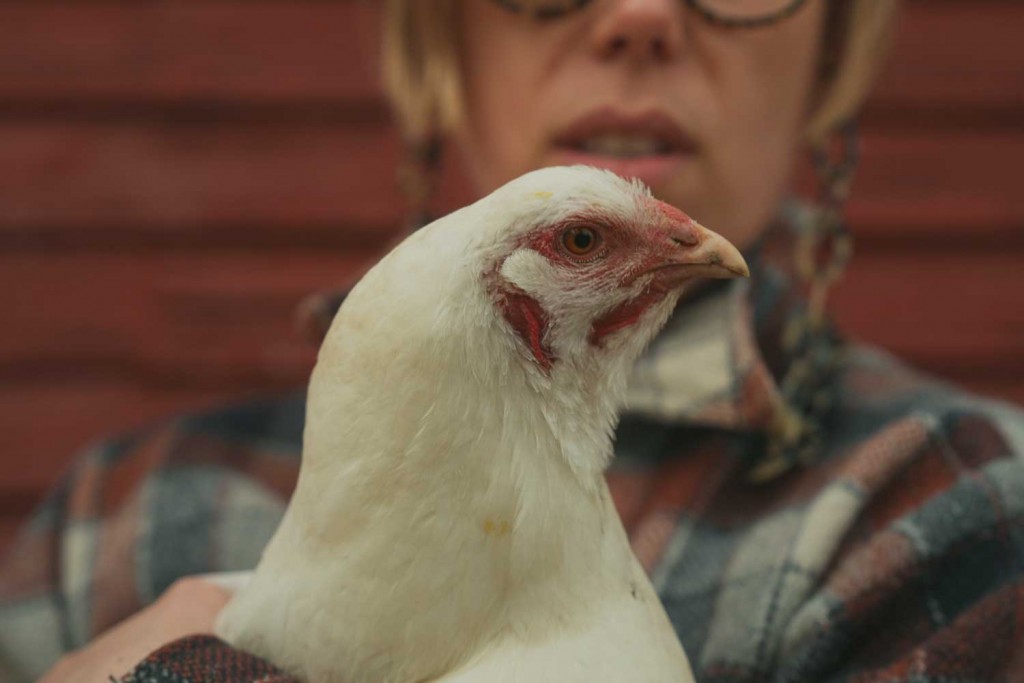Atelier
Starting Your First Farm
The Laporte-Poiriers bought a small farm and learned new farmers’ lessons the hard way. Here are some of their tips for starting your own farm project.
Text—Marie Charles Pelletier
In partnership with
![]()
Artist Catherine Laporte and train driver Rémi Poirier were living in the city but constantly looking for the horizon through the windows of their condo. The couple began watching the classifieds closely and poring over online listings. Their valiant search paid off in the end, when they discovered Granite Farm 1981, a heritage farm in the middle of a field in Ogden, Québec. After a visit, and consulting with each other for about five seconds, they decided to trade the busy city skyline for open fields as far as the eye can see.
Since then, Laporte and Poirier have been caught up in a new rhythm of lessons that can only be learned on a farm. Thanks in part to Jean-Martin Fortier, farmer and author, they’s learned on the fly how to work their first plot of land, plan a garden, and care for their seedlings. By the sweat of their brows, and making copious use of YouTube tutorials, they’ve repaired motors, taken care of sick chickens, and tended a vast tract of land. They also learned to manage expectations and to appreciate the quiet of winter evenings.
At the end of each day, Laporte and Poirier sit on their west-facing balcony and watch the sun sink below the horizon. It’s a brief, almost ceremonial moment of respite before the rooster crows again.
Starting your first farm — slowly but surely
____
You don’t need to wait until you’re a farming expert to begin pursuing your dream. In this snapshot of their daily routines, Laporte and Poirier explain how the desire to learn, along with support from neighbours, and lessons from Québec farming mentors, can help accomplish great things.
Here are five steps that will help with starting up your first farm project.

– 1 –
Find the right farm
Whether you’re motivated by nostalgia or simply the desire to see the horizon, expand your search criteria, and don’t get discouraged. Laporte and Poirier lost track of the number of evenings spent scrolling through real estate listings and afternoons spent driving through the countryside in hopes of happening upon a “For Sale” sign. Their patience and active searching paid off in the end.
– 2 –
Draw up a plan … one that’s not too ambitious
Starting a farm — no matter how small — is not easy. It’s best to set reasonable goals before you reserve a stand at Montréal’s Jean-Talon Market on Sundays. You also need to keep in mind that each season brings its share of challenges and unforeseen turns, such as unexpected frosts, radish-loving marmots, or the tractor motor acting up. Laporte and Poirier started by planting a quarter acre and taking care of a dozen chickens while becoming familiar with their new reality.

– 3 –
Find a mentor
In Québec, the farming world is full of mentors who have shown, over the course of years, that it’s possible to make a living from farming, even with a small farm. Their tips and the knowledge they’ve acquired will be valuable resources as you set off on the path of farming. Be on the lookout for market garden or organic farming courses. During the pandemic, Poirier took several courses online.

– 4 –
Make friends with the neighbours
Whether you live in the city or the country, it’s always best to be on good terms with your neighbours. Beyond growing vegetables, Laporte and Poirier also learned to cultivate good relationships with their new community. It must be said that they landed in a particularly friendly spot, where conversations on the doorstep or at the hardware store stretch out naturally. And even if these conversations sometimes get in the way of productivity, they’re always worth having. As a result, the cows from one neighbour fertilize the field, and the twin daughters of another neighbour are happy to clear the land with their small tractor.

– 5 –
Learn on the fly (and on YouTube)
Farmers need to be the kind of people who know as much about accounting as they do about animals and fixing tractors. No course can prepare you for all the situations that arise on a farm. You just have to roll up your sleeves and make do with the means available. But the beauty of having to wear several hats is that you’ll always continue to learn. And when the neighbours aren’t available, YouTube turns out to be a great help.
____
Learn more about Laporte and Poirier’s farm project in the series Going Sideways. This series presents stories — not always smooth — of people who have decided to step outside the box, or rethink it. Presented by BESIDE, in partnership with Desjardins.
____
Never Miss Another Issue
Two issues per year
25% OFF previous issues
Free Shipping in Canada